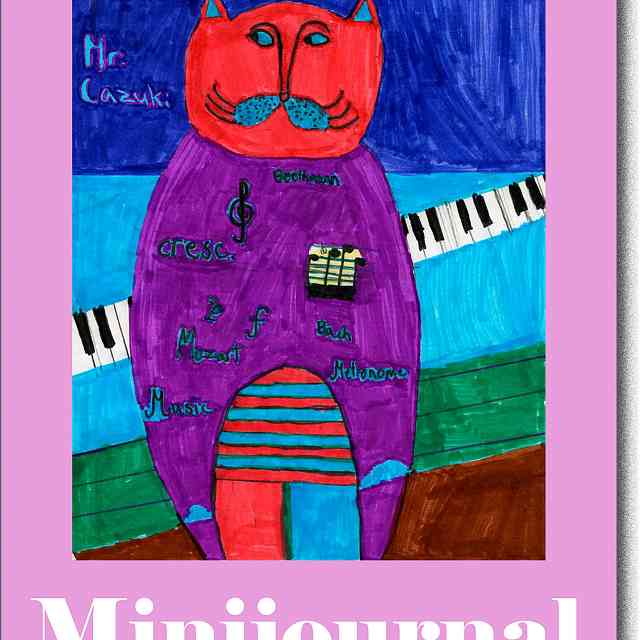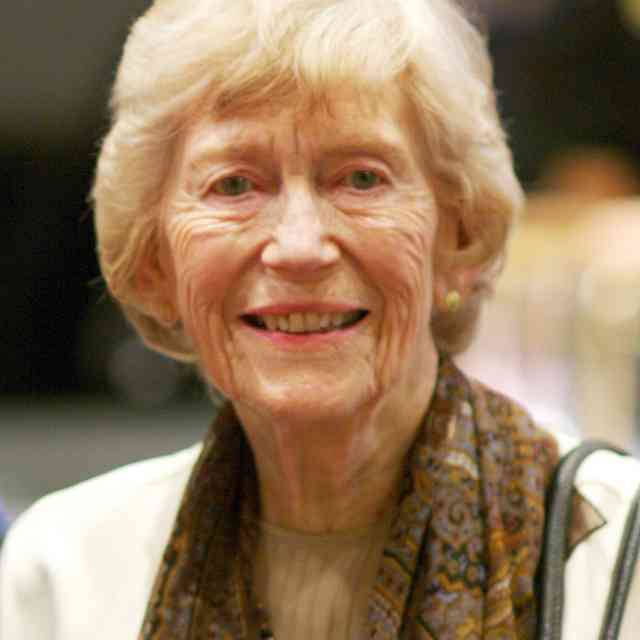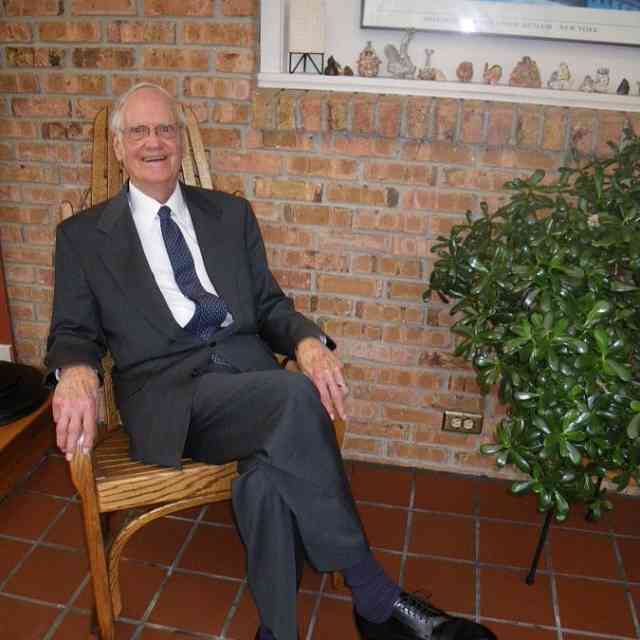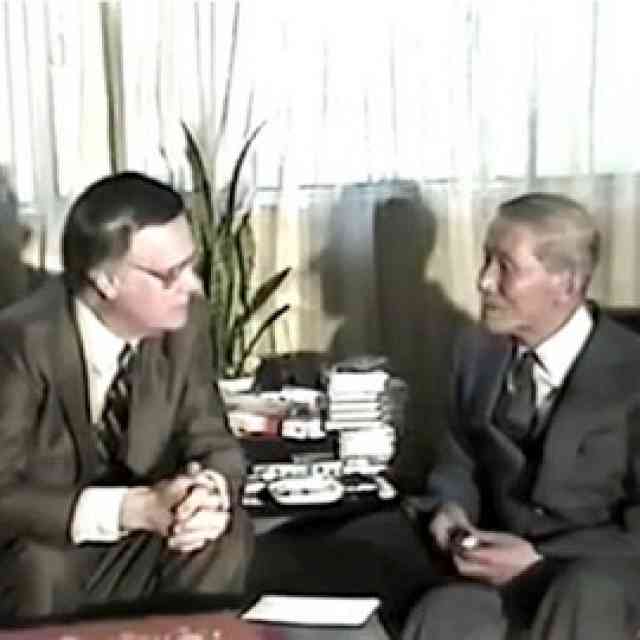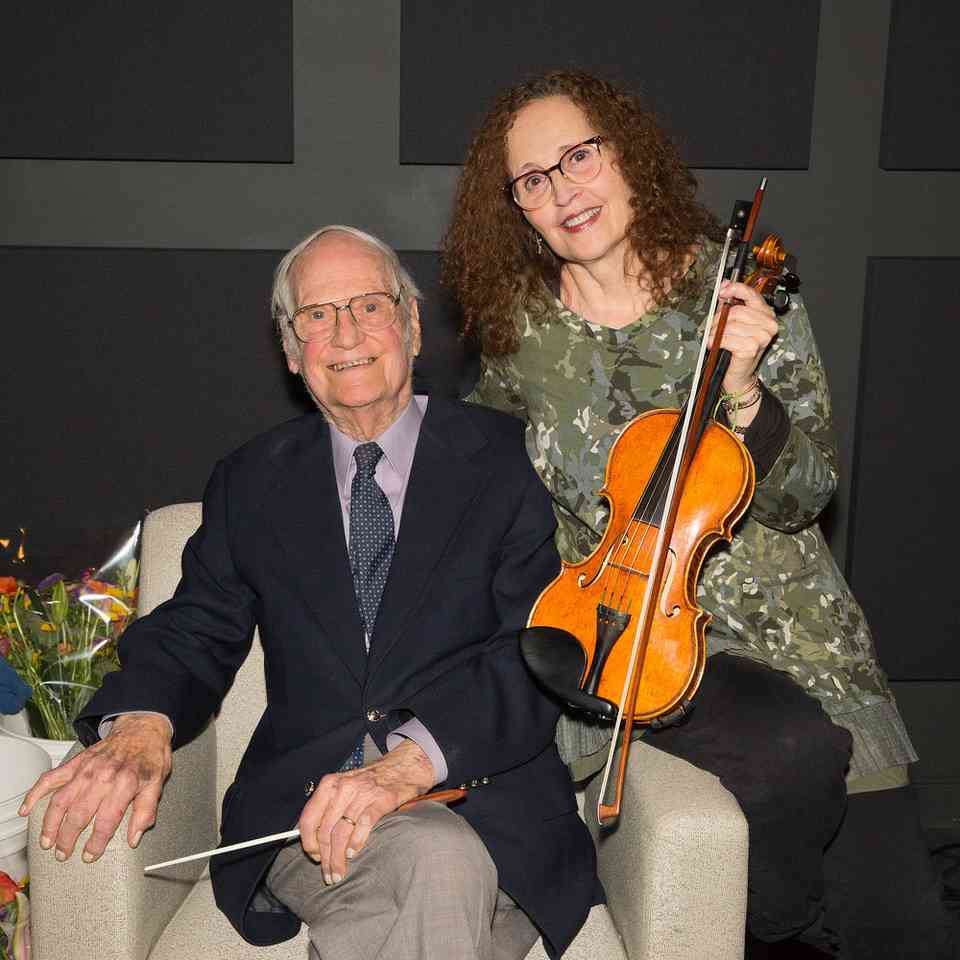
Mr. Starr and Amy Gesmer-Packman.
I can hear Mr. Starr’s voice in my head and hear him clearing his throat. I see his shining eyes and smile that brightens and lights up his entire face. It is the voice of the younger Mr. Starr who always delighted in telling stories and sharing his ideas. It is not the older, more frail voice that also kept telling me stories and sharing up until his final days.
I met Mr. Starr in 1976 when I arrived at the University of Tennessee from the Chicago area. He took an adequate 18-year-old violinist with very little confidence and helped turn her around. He called me the “queen of the negatives” and told me he would make me a crown. I had much work to do.
Some of that work was vibrato, often called the soul of the violin. Great violinists sometimes have an intuitive knowledge of their instrument but little knowledge of how others learn. Great teachers, like Mr. Starr, have knowledge of both. As a young violinist, Mr. Starr listened to recordings and developed his own way to learn vibrato. Hearing Albert Spaulding perform several times was a highlight of Mr. Starr’s formative years. He would talk about driving hours from his small town in Kansas to hear Spaulding play. Mr. Starr would sit in the front row and watch Spaulding’s vibrato.
It was vibrato that first brought Mr. Starr and Dr. Suzuki together. Mr. Starr was playing in a quartet with John Kendall at the first Suzuki Workshop at Southern Illinois University in 1965. This was an impromptu lunchtime performance and Dr. Suzuki was in the audience. After the performance, Dr. Suzuki said, I must talk to that violinist with the wonderful vibrato. Wonderful tone and wonderful heart were united in both Dr. Suzuki and Mr. Starr from then on.
In 1982, after I graduated with two years of teaching under my belt, Mr. Starr offered me an opportunity to start a Suzuki program for him at the University of Colorado in Boulder while getting my master of music degree. We shared an office at the University. Mr. Starr would teach the college students in the mornings and early afternoons and I would teach the Suzuki students in the evening.
Graduate students would also teach in the program as their schedules allowed. We had fantastic teachers go through what was then called Boulder Suzuki Violins. Later as we were able to add viola and cello, we became Boulder Suzuki Strings. As part of my degree, I took Mr. Starr’s pedagogy class again. Every time I took this class, I was amazed at how he balanced new ideas along with repetitions.
From 1982-1985, Mr. Starr would teach at the “Starr” Boulder Suzuki Violin workshops. Young students and their parents were always so excited to work with Mr. Starr. As a special treat, Mr. Starr and his wife, Connie, would play his Variation Z on Twinkles for the students.
In 1985, once I had completed my degree, we decided the best option was for the Suzuki program to become independent from the University. Mr. Starr continued to work with the children and parents and send CU graduate students to observe and teach with us. He would perform for the students and teach occasional masterclasses.
My students would be so excited when he would have them name their fingers so their fingers would behave and do what they were supposed to do. He always said that in teaching, one should increase the interest and decrease the tension. One way to decrease the tension is to “chunk it down,” or focus on one part of a piece at a time. He would also speak of the joy of achievement. As teachers, it is our job to build confidence in the student, to motivate them through concentration and focus. We must capture the child’s spirit to play through interest and observation. We must have “marvelous fun,” he would say.
Alongside his teaching, Mr. Starr wrote many books, which he would hand us single page copies of. We would work on them in group and private lessons and perform them around town, sometimes even before they were published.
In 2002, Mr. Starr retired from CU. He continued to teach the pedagogy course but no longer taught violin majors at the university. I invited Mr. Starr to teach group with us at BSS. He agreed and remained part of the faculty until the fall of 2019. Mr. Starr would teach two hours of group lessons, always teaching the most advanced groups. One year we had him rotate through different violin groups so that every violin student in the program had a chance to work with him. He also attended many of our faculty meetings. Some of our most advanced students had weekly private lessons with Mr. Starr in addition to their lessons with a BSS teacher. I was fortunate to attend and observe these lessons.
Mr. Starr loved teaching group and was meticulous in his planning. He was passionate about spending time in each class to sight-read. Mr. Starr would point out accidental bowings and phrasings and remind them to be careful with the speed of the bow. He loved working with the students on vibrato. I think this made the students quake in their shoes as he would go around the room having each student play the note A on the E string, 4 bows, and he would comment and give them a mini-lesson. Mr. Starr often reminded students of the Japanese word “minasan”— everyone was important and had to play their very best. As he got older, he and I would teach group together. I would take notes on the group lessons he taught and share them with the other BSS teachers. The advanced group is now named “The Starr Group” in his honor.
Mr. Starr always taught at our winter or spring workshops so all the violin students had an opportunity to work with him. At the final concerts, he loved getting up in the sea of children to lead Twinkles at the end, using his bow to get the children of all ages to play loud or soft depending on his bow height. He took great pleasure in the applause at the end of these workshops. He also happily led the students in repeating after him to their parents, “Thank you for letting me study music. And I’m sorry for all the trouble I caused in practice.”
He conducted our annual graduating senior solos with faculty and student orchestra. The students looked forward to getting to dress up and performing with an orchestra conducted by Mr. Starr. He was so nice and encouraging to these students of all different levels.
He would attend our solo recitals and offer advice to the faculty on our students as to what needed work and what was going well. He was a real presence for so many years. As he got older, he taught group for just one hour, still carefully planning and enjoying the time with the kids. He often arrived early and watched me work with our pre-twinkle students.
We had a tradition of a December concert for more advanced groups and ensembles to perform. He loved a piece he arranged for the students that we call St. Pete’s. He would conduct it once at an appropriate speed. Then he would grin, start the kids at what we call “Starr speed,” and walk away or sit there while they performed the piece at an incredibly fast speed amid much laughter.
With Mrs. Starr’s passing and Mr. Starr’s retirement from teaching group in 2019, my husband Dan and I tried to visit Mr. Starr a few times a month. Each visit we brought him lots of dark chocolate. He loved to talk about the old days. We just let him lead the conversation wherever he wanted to go. Now with his passing, there is an emptiness.
Somewhere there is a Twinkle Symphony with his Variations playing all at once with a huge tone.

